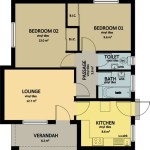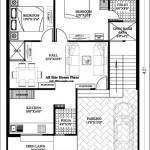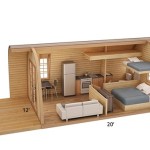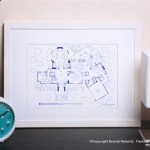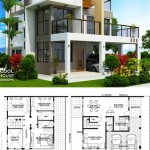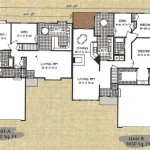One Floor Log House Plans
Log homes evoke a sense of rustic charm and connection with nature. For those seeking a simpler lifestyle, single-story log house plans offer an appealing blend of practicality and aesthetics. This article explores various aspects of one-floor log house plans, from design considerations to cost factors and maintenance requirements.
Key Design Considerations for One-Floor Log House Plans
Designing a functional and aesthetically pleasing single-story log home requires careful planning. Several factors influence the final design and overall livability of the space.
Consider these critical design elements:
- Square Footage and Layout: Determine the necessary square footage based on lifestyle needs and family size. Consider the flow between rooms for optimal functionality and privacy.
- Natural Light and Ventilation: Maximize natural light and ventilation through strategically placed windows and doors. This enhances energy efficiency and creates a brighter, more inviting atmosphere.
- Log Profile and Style: Choose from various log profiles, including round, D-shaped, or square logs, each offering a unique aesthetic. Consider the overall architectural style, blending the log profile with desired features like porches or gables.
- Roof Design: The roof design significantly impacts the home's appearance and structural integrity. Popular options for log homes include gable, shed, and hip roofs, each offering distinct advantages in terms of snow load capacity and aesthetic appeal.
- Accessibility: Design with accessibility in mind, considering features like wider doorways, ramps, and zero-step entries to accommodate future needs or residents with mobility challenges.
Benefits of Choosing a One-Floor Log House Plan
Single-story log homes offer numerous advantages compared to multi-story designs. These benefits contribute to their increasing popularity among homeowners seeking both practicality and comfort.
Here are some key advantages:
- Ease of Accessibility: Eliminating stairs enhances accessibility for individuals of all ages and mobility levels, making daily living more convenient and safe.
- Simplified Maintenance: Cleaning, maintenance, and repairs are generally easier in a single-story home, as all areas are easily accessible without ladders or scaffolding.
- Energy Efficiency: Single-story homes can be more energy-efficient due to reduced heat loss through the roof and easier temperature regulation throughout the space.
- Enhanced Open Floor Plan Options: One-floor designs often lend themselves well to open floor plans, creating a spacious and connected living environment.
Cost Factors Associated with One-Floor Log Homes
Understanding the cost factors associated with building a log home is essential for effective budgeting and planning. Several elements influence the final construction cost.
Consider these key cost factors:
- Log Species and Quality: The type of wood selected significantly impacts the cost, with premium species commanding higher prices. Log quality, including diameter and uniformity, also influences the overall expense.
- Foundation and Site Preparation: Site preparation, including excavation and foundation work, contributes to the initial project costs.
- Labor Costs: Log home construction often requires specialized craftsmanship, which can influence labor costs.
- Finishing Materials and Fixtures: Interior finishes, fixtures, and appliances significantly contribute to overall project costs. Choosing high-end materials will increase the budget.
- Location and Permits: Building permits and local regulations vary, impacting project timelines and associated costs.
Maintenance and Care for Log Homes
Maintaining the beauty and structural integrity of a log home requires regular care and attention. Proper maintenance practices ensure the longevity of the structure and protect the investment.
Key maintenance considerations include:
- Chinking and Sealing: Regularly inspect and maintain chinking and sealant between logs to prevent air infiltration and moisture damage.
- Pest Control: Implement preventative measures to protect against wood-boring insects and other pests that can damage log structures.
- Surface Protection: Apply protective coatings and stains to preserve the wood's natural beauty and protect it from UV damage and weathering.
- Roof and Gutter Maintenance: Regularly inspect and clean roofs and gutters to ensure proper drainage and prevent water damage.
- Foundation Inspection: Monitor the foundation for any signs of settling or cracking to address potential structural issues promptly.
Finding the Right One-Floor Log Home Plan
Locating the perfect one-floor log home plan involves careful research and consideration of individual needs and preferences. Resources are available to help navigate the selection process.
Explore these options:
- Architectural Designers: Collaborate with an architect specializing in log home design to create a custom plan tailored to specific requirements.
- Pre-Designed Plan Providers: Numerous companies offer a wide selection of pre-designed log home plans, often customizable to some extent.
- Online Resources: Online platforms provide access to a vast array of log home plans and resources, offering inspiration and design ideas.
Building Your One-Floor Log Home
Building a log home is a significant undertaking requiring careful planning and execution. Consider these aspects when embarking on this project.
Key considerations during construction:
- Contractor Selection: Choose a reputable and experienced contractor specializing in log home construction. Verify references and expertise in this specific building style.
- Project Timeline: Establish a realistic project timeline, accounting for potential delays due to weather or material availability.
- Budget Management: Closely monitor expenses throughout the construction process to ensure adherence to the established budget.
- Inspections and Permits: Obtain necessary permits and schedule regular inspections throughout the construction process to ensure compliance with building codes and regulations.
Careful consideration of these key aspects will facilitate a smoother construction process and a successful outcome.

One Level Floor Plans Log Cabin Cabins For Less

Springfield Log Home Floor Plan Porch House Plans Cabin

Lakeland Floor Plan Log Cabins For Less

Single Story Log Homes Floor Plans Kits Battle Creek

Single Level Log Cabin Plans For 1 000 To 2 Square Foot Layouts

Four Seasons Plans Information Southland Log Homes

Log Home Floor Plans Engineering Custom Blueprints

Battle Creek Log Homes Delivers A Range Of Floor Plans Kits For Single Story To Customers Natio Home Small

Log Home Floorplan Swan Valley The Original Lincoln Logs

One Story Plans Wood House Log Homes Llc

